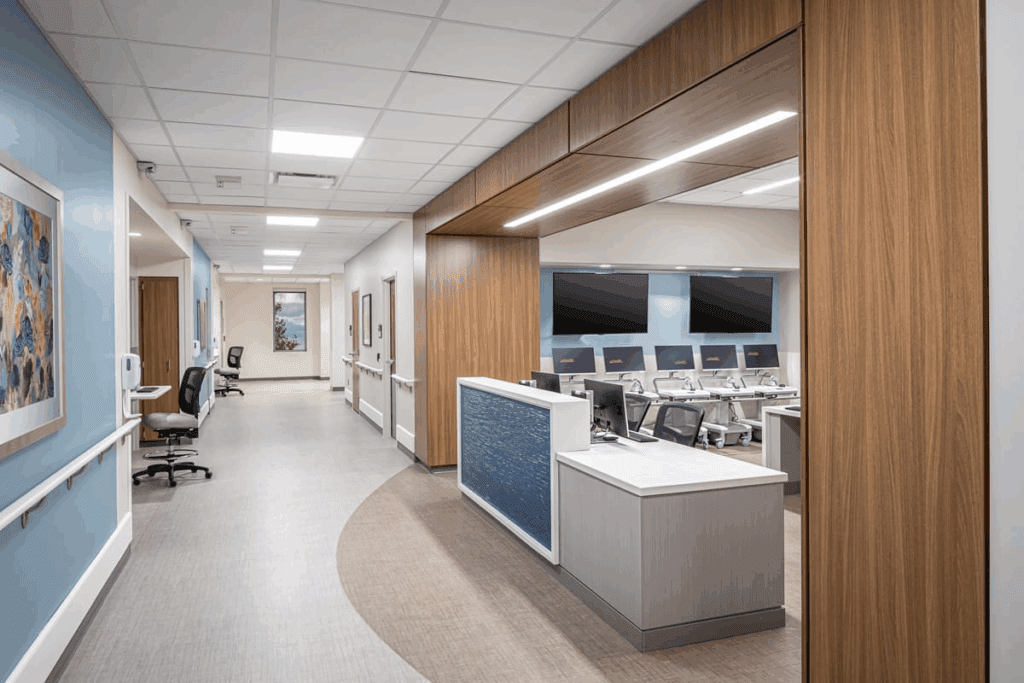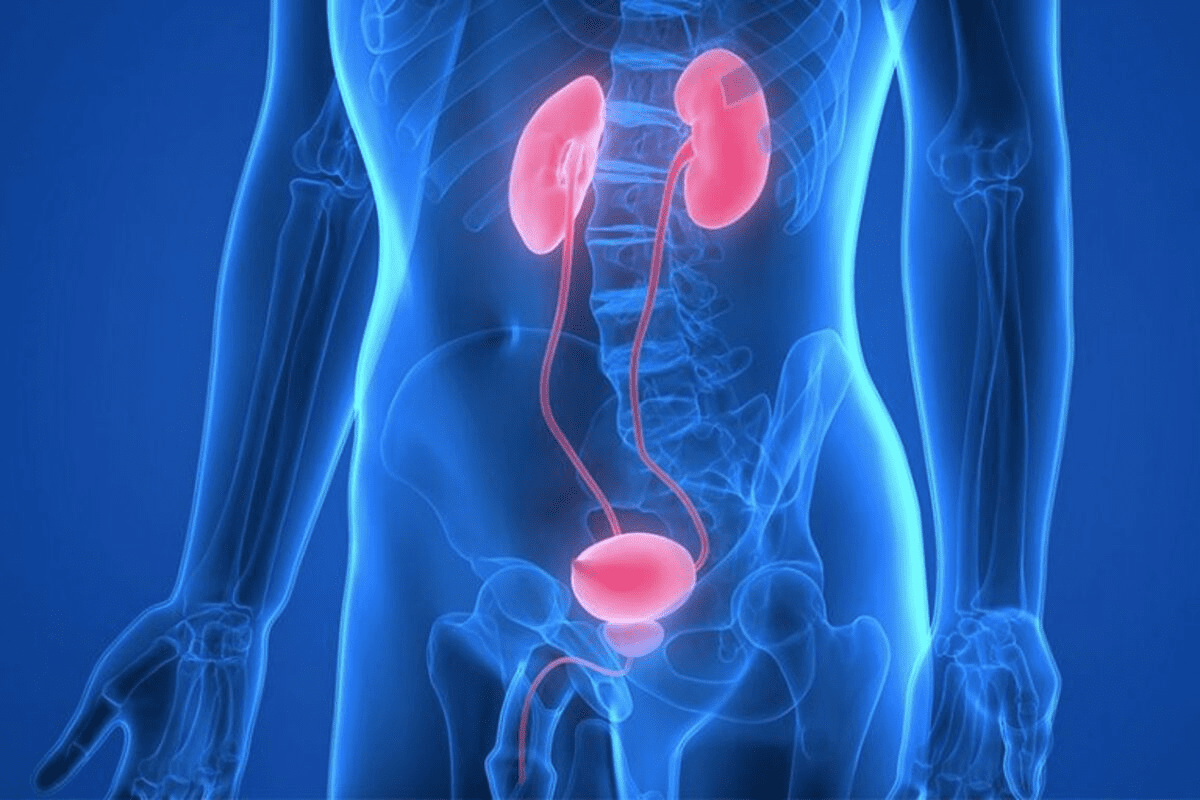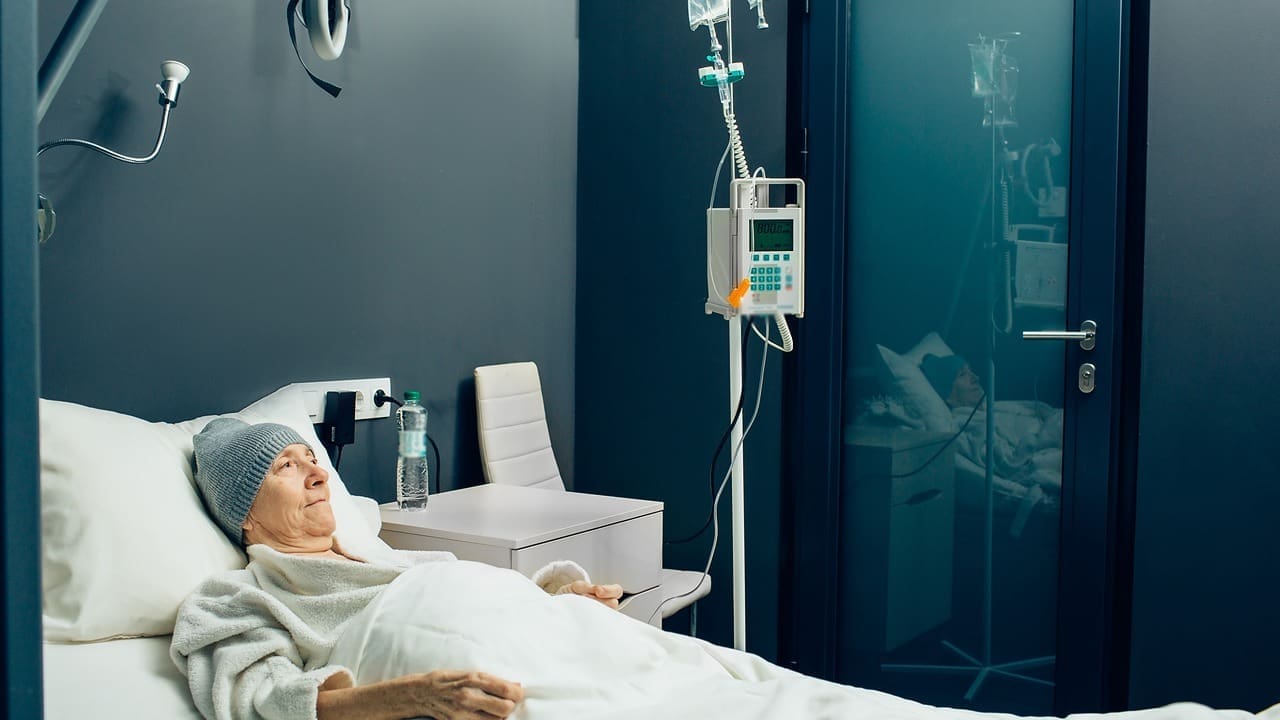Last Updated on November 26, 2025 by Bilal Hasdemir

Choosing cryoablation for kidney cancer treatment means opting for an advanced, patient-centered approach. It focuses on fast recovery and high success rates.
At Liv Hospital, we follow international standards and ethical excellence in every cryotherapy for renal cancer journey. We ensure our patients get the best care possible.
Cryoablation is a minimally invasive procedure that uses extreme cold to destroy cancer cells. It’s often used to treat small renal masses under 4 cm. This treatment option usually lets patients go home the same or next day. They can return to normal activities within one to two weeks.
Key Takeaways
- Cryoablation is a minimally invasive treatment for kidney cancer.
- Most patients can go home the same or next day after the procedure.
- Return to normal activities is expected within one to two weeks.
- Cryotherapy is used for treating small renal masses under 4 cm.
- Liv Hospital provides world-class care with international standards.
What is Kidney Cryoablation: The Freezing Technique for Renal Tumors

Renal cryoablation is a new way to treat kidney tumors. It uses cold temperatures to kill cancer cells. This method works well for small tumors, those under 4 cm.
The Science Behind Freezing Kidney Cancer Tumors
Cryoablation uses thin probes to reach the tumor. Cold gas flows through these probes to freeze the cancer. This freezing kills the cells by damaging their structure and blood supply.
This method is good because it targets cancer cells without harming healthy tissue. This is great for patients with kidney tumors, as it helps keep their kidneys working.
Types of Renal Masses Suitable for Cryoablation
Cryoablation works best for small tumors. Tumors under 4 cm are ideal. It’s also for patients who can’t have surgery because of other health problems.
- Small renal masses (less than 4 cm)
- Patients with compromised kidney function
- Individuals with multiple health issues making surgery risky
Minimally Invasive Approach to Kidney Cancer Treatment
Cryoablation is less invasive than surgery. It uses imaging like ultrasound or MRI to guide the probes. This way, it damages less of the surrounding tissue.
Benefits of the minimally invasive approach include:
- Reduced risk of complications
- Less post-procedure pain
- Shorter recovery time
Cryoablation is a big step forward in treating kidney cancer. It offers a less invasive option compared to traditional surgery.
Kidney Cryoablation Recovery Time: What Patients Can Expect

Knowing what to expect after kidney cryoablation is key for a smooth recovery. We’ll walk you through what happens from discharge to getting back to normal.
Same-Day or Next-Day Discharge Process
Most patients go home the same day or the next day after the procedure. This quick discharge is a big plus of this treatment. Patients are watched for a few hours after to check for any problems.
First 72 Hours After Renal Cryoablation
In the first 72 hours, you might feel sore and bruised where the procedure was done. It’s important to manage your pain well. Stick to the pain plan your doctor gave you to stay comfortable.
Timeline for Returning to Normal Activities
Recovery times can differ, but most people get back to normal in one to two weeks. Always follow your doctor’s advice on activity and care. Slowly getting back to your routine helps avoid problems and aids in recovery.
In summary, while everyone’s recovery is different, knowing the general timeline helps. It makes patients more confident in their treatment journey.
Cryoablation Kidney Success Rate: Long-Term Effectiveness Data
Cryoablation for kidney cancer is becoming more accepted as a treatment option. Studies show it has high success rates for the right patients.
Five-Year Cancer-Specific Survival Statistics
Research shows that up to 100% of patients can survive five years after cryoablation for kidney cancer. This is true for those with small tumors. The success comes from the precise targeting and the minimally invasive nature of the procedure.
The effectiveness of cryoablation depends on the tumor size, location, and the patient’s health. Studies confirm that smaller tumors and healthier patients tend to have better outcomes.
Recurrence-Free Survival Rates
Cryoablation also offers high recurrence-free survival rates. For some patients, this rate can reach 97%. This means the treatment not only removes the initial tumor but also controls cancer long-term.
Factors Influencing Treatment Success
Several factors affect the success of cryoablation for kidney cancer. These include:
- Tumor size and location
- Patient’s overall health and kidney function
- Experience and skill of the practitioner performing the procedure
Knowing these factors is key to improving treatment success. We work with patients to create a personalized plan based on their unique situation.
| Factor | Impact on Success Rate |
| Tumor Size | Smaller tumors ( |
| Patient Health | Better overall health correlates with higher success rates |
| Practitioner Experience | More experienced practitioners achieve better outcomes |
By considering these factors and using the latest cryoablation technology, we can achieve high success rates. This improves patient outcomes.
Kidney Cryoablation Side Effects: What to Watch For
It’s important for patients to know about the side effects of kidney cryoablation. This treatment is minimally invasive but comes with risks. We’ll talk about common symptoms, rare complications, and when to get medical help.
Common Post-Procedure Symptoms
After kidney cryoablation, some side effects may occur. These include:
- Localized pain or discomfort at the procedure site
- Mild bleeding or hematuria (blood in urine)
- Fatigue or feeling weak
- Nausea or vomiting
These symptoms are usually short-lived and can be managed with simple treatments. Most patients can go back to their normal activities in a few days.
Rare Complications and Their Management
Though rare, serious complications can happen. These include:
- Infection: We watch for signs and treat with antibiotics if needed.
- Damage to surrounding structures: This is rare due to precise imaging during the procedure.
- Persistent pain: We adjust pain management as needed.
The risk of complications is lower with cryoablation than with traditional surgery.
When to Contact Your Healthcare Provider
Know when to seek immediate medical attention. Contact your healthcare provider if you have:
- Severe pain not relieved by medication
- Heavy bleeding or persistent hematuria
- Fever or chills
- Increasing swelling or redness at the procedure site
We’re here to provide full care and support during your recovery. If you have concerns or questions, reach out to your healthcare team.
Kidney Cancer Ablation vs Surgery: Comparative Recovery Analysis
Ablation for kidney cancer is a new option compared to traditional surgery. It offers clear advantages in recovery. We need to look at several important factors to understand the differences.
Hospital Stay Duration Differences
The main difference is how long you stay in the hospital. Ablation procedures are usually less invasive. This means you might go home the same day or the next day. Surgery, being more invasive, requires a longer stay.
- Ablation: Same-day or next-day discharge
- Surgery: Longer hospital stays, often 3-5 days or more
Post-Procedure Pain and Discomfort Levels
People who get kidney cancer ablation usually feel less pain after the procedure. Ablation causes smaller wounds and less damage. This leads to less discomfort during recovery.
| Procedure | Typical Pain Level |
| Ablation | Mild to Moderate |
| Surgery | Moderate to Severe |
Kidney Tissue Preservation Benefits
Ablation keeps more kidney tissue compared to surgery. It targets only the tumor. This is good for patients with kidney problems or at risk of future issues.
Quality of Life During Recovery Period
The recovery for ablation is faster. Patients can get back to normal activities quicker. They also face fewer complications and less pain.
- Faster recovery times
- Less risk of complications
- Better preservation of kidney function
In summary, ablation and surgery both have their roles in treating kidney cancer. Ablation stands out for its shorter hospital stays, less pain, and better kidney preservation. These benefits lead to a better quality of life during recovery, making ablation a good choice for many patients.
The Cryoablation Procedure: Step-by-Step Process
Learning about the cryoablation process can help patients get ready for their treatment. This method involves several steps to treat kidney tumors effectively.
Pre-Procedure Preparation and Testing
Before cryoablation, patients go through tests and preparations. This ensures they’re a good fit for the procedure. Tests may include:
- Imaging tests like CT scans or MRI to find the tumor
- Blood tests to check health and kidney function
- A detailed medical history and physical check-up
Table 1: Pre-Procedure Tests and Their Purposes
| Test | Purpose |
| CT Scan or MRI | To locate the tumor and assess its size and position |
| Blood Tests | To evaluate kidney function and overall health |
| Medical History and Physical Exam | To identify any possible risks or complications |
Anesthesia Options for Renal Cryoablation
Cryoablation can be done under different types of anesthesia. This depends on the patient’s health and what they prefer. Options are:
- General anesthesia, where the patient is fully sedated
- Local anesthesia with sedation, where the area is numbed and the patient is relaxed
The choice of anesthesia is made with the patient and their healthcare team. They consider the patient’s health and the procedure’s complexity.
Imaging-Guided Precision Targeting
During the procedure, imaging guides the targeting of the tumor. This involves:
- Using CT scans or ultrasound to guide the placement of cryoprobes
- Inserting thin metal probes into the tumor site to circulate extremely cold gas
Imaging guidance ensures the cryoprobes are placed correctly in the tumor. This maximizes the treatment’s effectiveness.
Duration and Immediate Post-Procedure Care
The cryoablation procedure can take a few hours, including preparation and recovery. After the procedure, patients are watched for any complications. They also get instructions for post-procedure care.
Patients usually go home the same day or the next day. This depends on their recovery and the specifics of their procedure.
Ideal Candidates for Kidney Cryoablation Treatment
The best candidates for kidney cryoablation have small, localized tumors. This method is a promising alternative to traditional surgery. It’s less invasive and effective for certain patients.
Small Renal Masses Under 4 cm
Those with tumors under 4 cm are often good for cryoablation. These tumors are sometimes found by chance during tests for other issues. Cryoablation works well for small tumors because it targets cancer cells without harming the rest of the kidney.
Age and Health Considerations
Age and health are key in choosing cryoablation. Older patients or those with health issues might prefer this option. It’s less risky than open surgery. We look at each patient’s health to see if cryoablation is right for them.
Patients with Single Kidney or Compromised Renal Function
Cryoablation is great for those with one kidney or poor kidney function. It helps protect the healthy tissue around the tumor. This is important for keeping the kidney working well.
Contraindications for the Procedure
While cryoablation is useful, it’s not for everyone. Those with severe bleeding problems or can’t do imaging tests might not qualify. Also, some tumors or locations are harder to treat. We assess each case to find the best treatment.
Post-Cryoablation Monitoring Protocol
After kidney cryoablation, patients go through a key monitoring phase. This phase checks if the treatment worked and if cancer might come back. It looks at how the treated tumor is doing, the health of the kidney, and any signs of cancer.
Follow-Up Imaging Schedule
Having a set schedule for follow-up images is very important. It helps us see how the treated tumor is doing and if new tumors have formed. Here’s what we suggest:
- First check-up images within 3-6 months after the procedure
- More images every 6-12 months for the first 2-3 years
- Images every year after that, or if needed
We use CT or MRI scans with contrast to check the tumor’s size and how it looks.
Kidney Function Assessment Timeline
It’s vital to keep an eye on the kidney’s function after cryoablation. We check kidney function by:
- Measuring serum creatinine at each visit
- Calculating the eGFR
- Checking electrolyte levels now and then
These tests help us see how the procedure affects the kidney and spot any long-term problems.
Long-Term Cancer Surveillance Recommendations
Keeping an eye on cancer over the long term is key. We suggest:
- Annual visits with imaging for at least 5 years
- More surveillance beyond 5 years if needed
- Telling patients about symptoms that might mean cancer is back, like blood in the urine or pain in the side
Following this monitoring plan helps us get the best results from the treatment. It also lets us catch any problems early.
Technological Advancements in Renal Cryoablation
Renal cryoablation has seen big changes thanks to new technology. This has made it a better choice for treating kidney cancer. The tech keeps getting better, making the treatment safer and more precise.
Cryoprobe Technology Evolution
Cryoprobes have changed a lot. They are now thinner, more flexible, and can get colder faster. This makes the freezing process more precise, protecting healthy tissue around the tumor.
Key improvements in cryoprobe technology include:
- Enhanced thermal conductivity for more efficient freezing
- Improved flexibility for better navigation through complex anatomy
- Smaller diameters for reduced invasiveness
3D Mapping and Real-Time Monitoring Improvements
New imaging tech like 3D mapping and real-time monitoring has made renal cryoablation better. These tools help target tumors accurately and check the ablation zone in real time.
Real-time monitoring enables:
- Immediate assessment of the ablation zone’s size and shape
- Adjustments to the procedure as needed to ensure complete tumor coverage
- Reduced risk of complications due to more accurate temperature control
Future Innovations in Kidney Cancer Ablation
Technology will keep getting better for renal cryoablation. We’ll see even more precise cryoprobes, better imaging, and maybe AI to help plan treatments. These changes will make treatments even safer and more effective.
| Technological Advancement | Current Status | Future Potencial |
| Cryoprobe Design | Thinner, more flexible probes | Even more precise temperature control |
| 3D Mapping and Monitoring | Real-time imaging and assessment | Integration with AI for predictive analytics |
| Ablation Techniques | Improved precision and safety | Combination therapies for enhanced efficacy |
These advancements show a big commitment to better patient care. They highlight how renal cryoablation will keep getting better as a top treatment for kidney cancer.
Conclusion: Weighing the Benefits of Kidney Cryoablation
We’ve looked into kidney cryoablation, a treatment for kidney tumors. It’s a minimally invasive option with many benefits. It offers a highly effective way to treat tumors with fewer side effects.
Cryoablation for kidney cancer has shown great success. Up to 100% of patients survive cancer-specifically for five years. The procedure is quick, allowing many to go home the same or next day.
When thinking about kidney cryoablation, consider several factors. These include the tumor’s size and location, your overall health, and kidney function. Personalized treatment plans are key to getting the most out of this procedure.
As technology gets better, so will renal cryoablation. This will lead to even better results for patients. Knowing the pros and cons of kidney cryoablation helps both patients and doctors make the best treatment choices.
FAQ
What is kidney cryoablation?
Kidney cryoablation is a treatment that freezes cancer cells to kill them. It’s used for small kidney cancers.
How long does it take to recover from kidney cryoablation?
Recovery is quick. Most patients go home the same day or the next day. They can get back to normal in a few days to a week.
What are the success rates for kidney cryoablation?
Success rates are high. Up to 100% of patients survive cancer-specific survival for five years. Also, 97% of patients stay cancer-free for a long time.
What are the common side effects of kidney cryoablation?
Side effects include pain, discomfort, and tiredness. Rarely, there can be infection, bleeding, or damage to nearby tissues.
How does kidney cryoablation compare to surgery?
It has a shorter hospital stay and less pain after. It also keeps more kidney tissue, improving life quality during recovery.
Who is a good candidate for kidney cryoablation?
Good candidates have small kidney cancers under 4 cm. Older adults or those with kidney issues are also good candidates. Each case is different.
What is the follow-up protocol after kidney cryoablation?
Follow-up includes regular imaging and kidney checks. It also includes long-term cancer monitoring to see if the treatment worked.
How has cryoablation technology advanced?
Technology has improved with better cryoprobes and 3D mapping. Real-time monitoring has also been added. This makes treatments more precise and effective. Research continues to improve it further.
What are the benefits of kidney cryoablation?
Benefits include being minimally invasive, having high success rates, and quick recovery. It also preserves kidney tissue, making it a good option for some patients.
Is kidney cryoablation a painful procedure?
The procedure is done under anesthesia to reduce pain. Some discomfort may occur during recovery, though.
Can kidney cryoablation be used for larger renal masses?
It’s usually for small masses under 4 cm. But, larger masses might be considered based on individual factors and tumor details.
References
- Seager, M., Kumar, S., Lim, E., Munneke, G., Bandula, S., & Walkden, M. (2021). Renal cryoablation – a practical guide for interventional radiologists. The British Journal of Radiology, 94(1118). https://pmc.ncbi.nlm.nih.gov/articles/PMC7934314/






